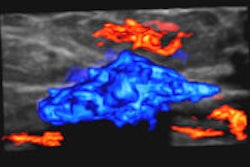Air pollution, even at relatively modest levels seen in some cities, is significantly related to hospitalization for heart disease and the development of lung cancer, according to a pair of studies released today in Lancet and Lancet Oncology.
Both studies show that the more pollution in the environment, the more lung cancer and heart disease can be expected to develop. The researchers said they were unable to find a "safe" level of air pollution.
First, the European Study of Cohorts for Air Pollution Effects (ESCAPE) study examined the relationship between air pollution and lung cancer incidence in 17 European cohorts in nine countries (The Lancet Oncology, July 10, 2013).
The authors looked at for particulate matter (PM) with diameter of less than 10 µm (PM10), diameter less than 2.5 µm (PM2·5), and diameter between 2.5 and 10 µm (PMcoarse), as well as soot (PM2·5absorbance), nitrogen oxides, and two indicators of traffic density.
The study included 312,944 individuals followed for a mean 12.8 years, with 2,095 incident lung cancer cases reported. A meta-analysis of the data showed a significant association between lung cancer risk and particulate matter in the air, associated with increased risks of lung adenocarcinomas as expressed by hazard ratios of 1.51-1.55.
Traffic density also increased the risk, although the difference was less dramatic. An increase in road traffic of 4,000 vehicle kilometers per day within 100 feet of a study participant's residence was associated with a HR of 1.01. The authors found no association between lung cancer and nitrogen oxide levels.
A second study aimed to assess the association between air pollution and acute heart failure, including hospitalization and related mortality (The Lancet, July 10, 2013). Results showed that heart failure or hospitalization was associated with increases in carbon monoxide (3.52% per 1 part per million), sulfur dioxide (2.36% per 10 parts per billion), and nitrogen dioxide (1.70 per 10 parts per billion) concentrations.



















